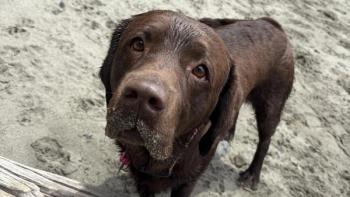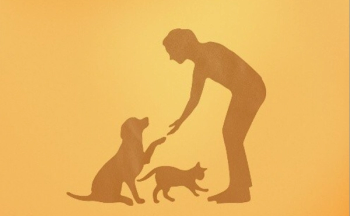
Leading Off: Attract cat clients with friendly handling
Dr. Ilona Rodan discusses new handling guidelines that will make your practice more feline-friendly.
The cat is the most popular pet in the United States, yet cats are still underdogs when it comes to veterinary care. It is not because people don't love their cats—78% of cat owners consider their cats to be family members.1 Unfortunately, misconceptions about cats and difficulty getting cats to the veterinarian have led to a decline in feline veterinary visits.
Dr. Ilona Rodan
The Bayer Veterinary Care Usage Study surveyed more than 1,000 cat owners, and results indicate that 58.2% of cats "hate to go to the vet" and that 37.6% of cat owners say "just thinking about the veterinary visit is stressful."2 This has resulted in many cats not receiving much-needed veterinary care, causing lack of disease prevention, delayed treatment, and reduced quality and length of life for the cat.
The American Association of Feline Practitioners (AAFP) and the International Society of Feline Medicine (ISFM) Feline-Friendly Handling Guidelines provide solutions based on scientific evidence and understanding of the feline species to help improve the veterinary experience for cats and cat owners and, subsequently, increase feline visits.3 Download a PDF of the guidelines and the client handout at
WHAT'S IN THE GUIDELINES?
Three important areas are discussed in the handling guidelines to help you attract cat owners and cats to your practice. These ideas can be incorporated into any veterinary practice that sees cats, regardless of whether it is a mixed-animal, companion-animal, or all-feline hospital. And they don't require expensive changes to your hospital. The three areas are
• Client education to make the carrier and car trip less stressful for cats and cat owners (Figure 1).
• Tips to make the practice environment more comfortable and calm for the cat (Figure 2).
• Handling techniques to prevent feline fear and pain, the most common causes of feline aggression in the veterinary practice (Figure 3).
1. Advise clients to keep the carrier in a favorite room at home, preferably in a sunbeam, and to toss treats into the carrier until the cat sees the carrier as a safe haven.
2. Examine the cat where it is most comfortable, and distract or reward it with treats or catnip.
The client's perspective
The challenge for clients starts well before the veterinary visit and continues well afterward. How will they get their cats into the carrier? Cope with the car ride? Handle seeing their cats act so differently from their dear, sweet cats that they see at home? Let the veterinarian and staff handle their cats in ways that they may consider unpleasant? Deal with the difficulty of reintegrating their cats when one comes home from the veterinarian?
3. Gentle stroking or massaging of the head helps to calm cats and works much better than scruffing. This cat is much calmer during blood pressure measurement.
Compare this with the picture of dog owners and their dogs excited to go for a car ride, meet new people, and get "cookies" as treats at the veterinary practice. Fortunately, our feline patients can experience these things, too. The guidelines and client handout provide the needed information to help you and your team.
The practice perspective
Inexpensive changes to make the practice environment more cat-friendly include changing the waiting room so that seating areas are back-to-back or surrounded by plants so that cats don't see unfamiliar dogs. Getting the cat into the examination room right away or having certain times when only cats are seen are some other suggestions provided. The guidelines contain many other tips, too.
The cat's perspective
Respectful feline handling is safer and more positive for all involved. Most of us have been taught to scruff and tightly restrain cats to prevent human injuries and zoonotic disease, as well as to limit movement in order to perform patient care. These goals must continue to be our priority. Unfortunately, this restraint has increased feline fear and fear-associated aggression, client upset, and human injury. Fortunately, understanding the cat and its behavior allows us to identify better handling that is more efficient, respectful, less stressful, and safer for the veterinary team, the client, and the cat.
TRUE HELP FROM A DEDICATED PANEL
I would like to thank our international group of panelists for the handling guidelines—consisting of four behavior specialists and four board-certified feline practitioners—for all their contributions and hard work to make these guidelines possible. Dr. Eliza Sundahl, co-chair, deserves special thanks for her additional help on both the guidelines and the client handout.
As a practice owner and consultant, I have seen the benefit in several practices of encouraging all members of the veterinary healthcare team to read the guidelines and work together to make a practice feline-friendly. Using both the handling guidelines and the 2010 AAFP-AAHA Feline Life Stage Guidelines allows your team to develop the solutions in your practice to enhance the value of the care you provide. In turn, we enhance the human-animal-veterinary bond and improve feline health and welfare.
Editors' note: For even more advice on caring for cats in your practice, see Dr. Tony Buffington's article on the AAFP-AAHA Feline Life Stage Guidelines on page 509.
Dr. Ilona Rodan was the co-chair of the AAFP and ISFM Feline Handling Guidelines. She is the medical director of the Cat Care Clinic in Madison, Wis. In 2009, she also started Feline-Friendly Consulting to help veterinary teams grow the feline portion of their practices. Dr. Rodan is a past president of the AAFP and co-chair of several AAFP guideline panels. She received the 2005 AVMA Animal Welfare Award for her work to improve feline welfare.
REFERENCES
1. Pew Research Center. Gauging family intimacy: dogs edge cats (dads trail both): a social trends report. Washington, D.C.: Pew Research Center, 2006. Available at
2. National Commission on Veterinary Economic Issues. Bayer Veterinary Care Usage Study.
3. Rodan I, Sundahl E, Carney H, et al. AAFP and ISFM Feline-Friendly Handling Guidelines. J Feline Med Surg 2011;13:364–375.
Newsletter
From exam room tips to practice management insights, get trusted veterinary news delivered straight to your inbox—subscribe to dvm360.






